The cold weather is here. Winter coats are forming. Yet ropers everywhere are ready to saddle up and hit the last big-money ropings of the year or prepare for winter in Arizona. But, do team roping horses feel the same? Maybe they’ve spent a little extra time in the stall because the rain, cold and bustle of the holiday season has made it hard to hit the practice pen. Some horses are more stoic than others and can push through their fatigue the pressures of the Ariat World Series of Team Roping Finale. But, the next day when every part of their body is sore, they might not be as excited to back in the box.
Find a Happy Medium
Dr. Wes Vogt is a team roping veterinarian who has spent the majority of his career on the backside of a racetrack. At the track, he sees horses that epitomize fitness. When he goes to the roping pen, he doesn’t expect those horses to look like racehorses, but said they shouldn’t look like a pasture ornament either. After all, a rope horse is a performance animal. Dr. Vogt, who has served as an official veterinarian many times at the USTRC Cinch National Finals of Team Roping, suggested ropers shoot for a happy medium level of fitness for their horses.
“I think a horse’s physical fitness is still an overlooked component to being a successful team roper,” Dr. Vogt said. “We are getting better than we used to be, but there are still a lot of horses I see that I can tell have not worn a saddle since the last roping they were hauled to a month ago. And, that is just not fair to the horse.”
Team roping horses can get by being less fit than a racehorse because they are only performing for about 50 yards and then given breaks in between runs, as opposed to a racehorse who might run a full mile before they get a break, Dr. Vogt said. For the average jackpot team roping horse, Dr. Vogt suggested the horse be ridden (not roped on) two days per week, practice roped on two days a week and then competed on as the roper’s schedule allows. He said he tries his best to follow this schedule with his own heading horses, one of which is still able to compete at the golden age of 26.
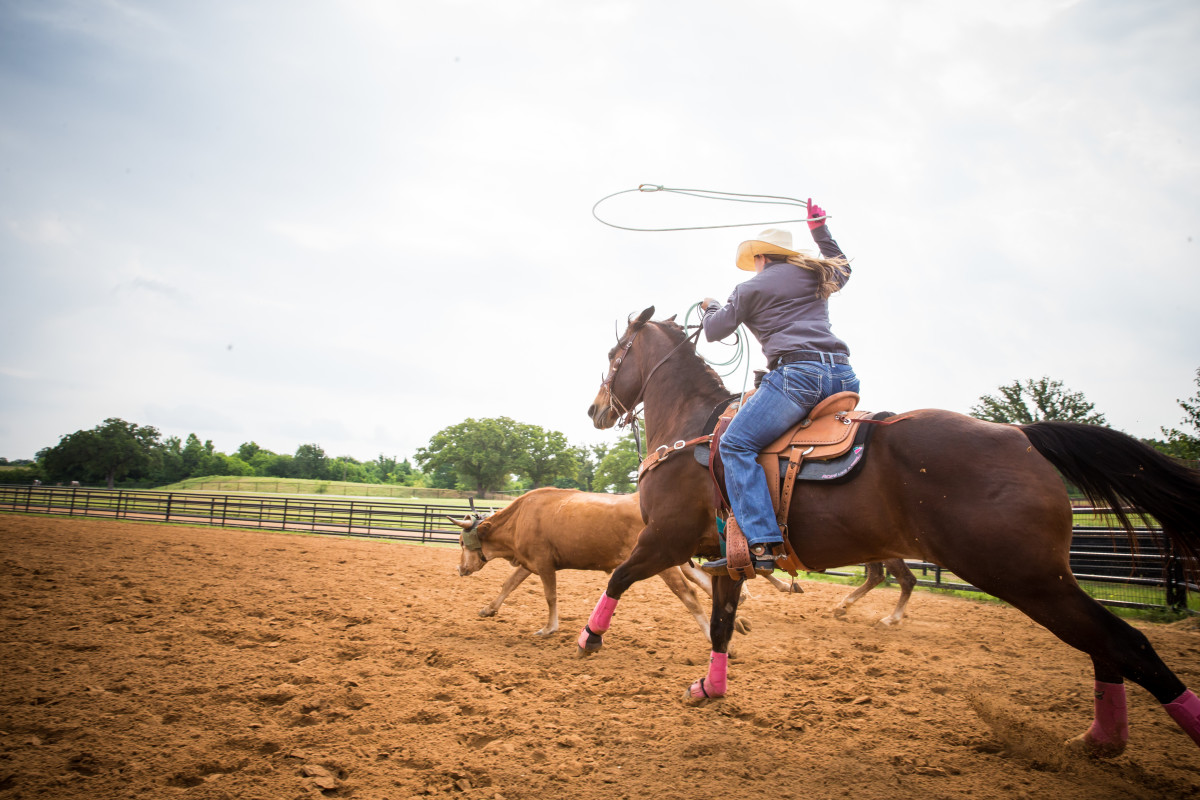
Fit is Fast
Kathy Harrison and her husband, Elsworth, train and raise AQHA show horses for a living at their ranch near Tulsa, Oklahoma. The couple has trained numerous AQHA World Champion heading, heeling, and tie-down roping horses, and because they primarily rope in the horse show arena, they have to have horses that look fit and slick year-round. Harrison ropes on her horses three to four days per week and then spends one day a week taking them through conditioning drills. This keeps them looking like they are ready for the AQHA World Show, even if she is only taking them to a local USTRC jackpot, she said.
“Even in the dead of winter, I have to keep my horses looking sharp because I represent our business wherever I am,” she said. “But, I think the time I put into my horses really pays off and is worth it not just aesthetically, but physically and mentally for both them and me as well.”
The first time Harrison realized what an advantage having horses that were always tuned up and fit was at the first all-girl team roping at the Windy Ryon Memorial, she said.
“It was back in 1986, and it was kind of a big deal that they were going to have a WPRA-approved team roping at the Windy Ryon, so I went and got there in time to watch the men’s roping before our’s started. It wasn’t but a few runs in before I realized the horse underneath me was going to be my biggest advantage in this set up,” Harrison said.
READ: Secrets to Keeping Your Rope Horse Sharp with Trevor Brazile
The score was set at 17-feet, the arena was long and wide open, and the steers were big and fast. Many of Harrison’s competitors were anxious about the challenge their horses were up against just to get them close enough to throw their rope.
“That was the first time I fully appreciated the hours my husband and I are able to dedicate to our roping horses because while the other women were stressing about scoring and getting out late and not catching up, I was focusing on my roping because I knew my horse was prepared to do his job and trusted that even in extreme circumstances like this, he would be able to handle it. I knew we had him physically and mentally ready for any roping,” she said.
The first Windy Ryon all-girl team roping drew 42 teams, even more than the committee hoped for, and was just a one-header, Harrison said. Harrison placed, and attributed it to her horse, One Tam Tag, patiently scoring and then having the physical ability to break hard, catch up to the steer and then handle him so her heeler could be successful.
“Ever since that first Windy Ryon, I actually look forward to roping in set ups like that. These days everyone ropes well, but I feel like I have a competitive advantage because not all of those good ropers have the time or the desire to invest in their horses the way I do,” she said.
Harrison has placed numerous times at the Windy Ryon since that first year and said even on the years she did not come home with a check, she was able to find great satisfaction in the way her horses performed.
“I want to win every roping I go to just like everybody else, but winning is not always in our control. Because I take so much self-pride in my horses and how they work, it gives me a goal more within my control to accomplish at each roping. Maybe my heeler didn’t catch or I didn’t draw well, but if I can honestly say I roped well and my horse worked well, then I can walk away feeling successful,” she said.
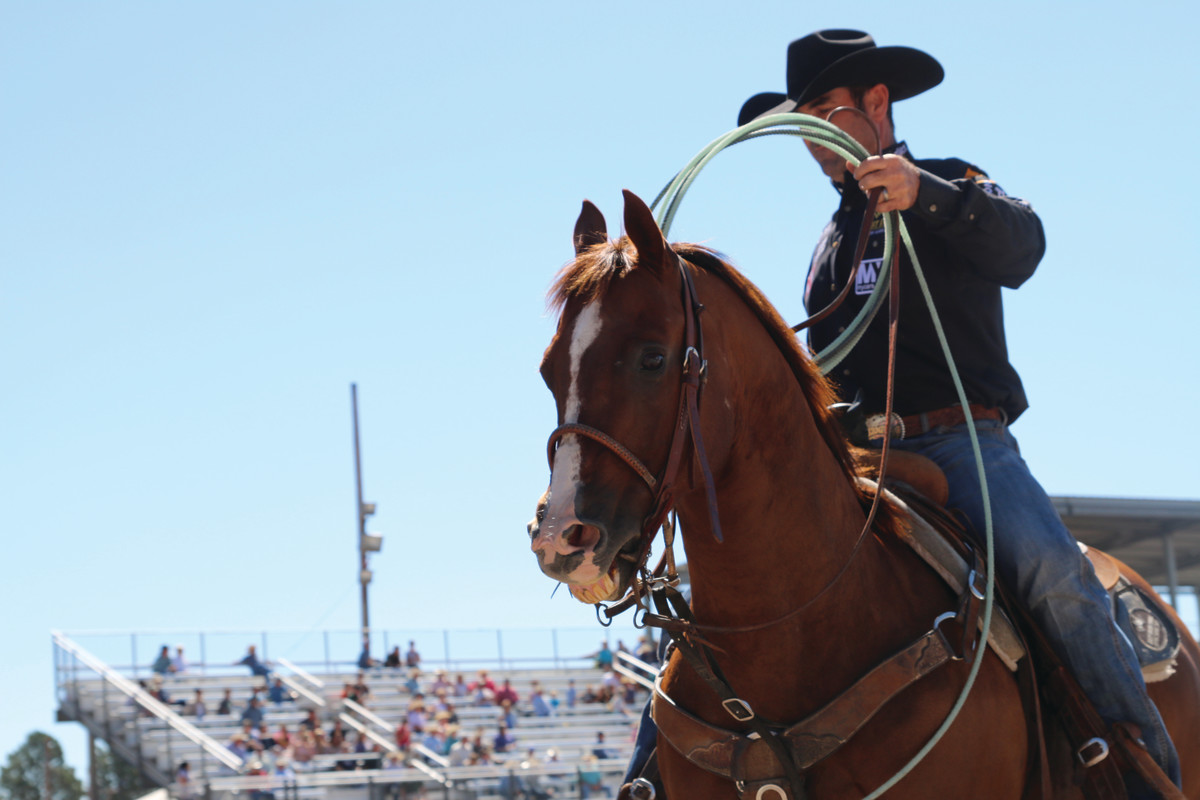
Ride with Purpose
Ropers who follow nine-time WNFR qualifier and long-time clinician Tyler Magnus know his program is all about improving people’s roping ability through their horsemanship. Magnus encouraged ropers to not only keep their horse fit to give them a fair chance at being competitive, but instead of just mindlessly loping circles to check the exercise box, challenge themselves every time they get in the saddle to have a plan and a purpose.
“The cool thing about focusing on your horsemanship is that you are spending more time in the saddle teaching your horse how to better use his body throughout your run. That makes his job easier and more enjoyable, which will improve your roping. A lot of people come to my clinics thinking they have a roping problem. Most of the time, improving their horse position through a little closer focus on their horsemanship solves the problem,” Magnus said.
Magnus also said he sees a lot of ropers buy four or five horses and then try and spread their already limited time between all of them, when in reality they would be much better off owning one or two horses and spending more time keeping them fit and more money keeping them well-fed and cared for.
“All the time I hear ropers wanting to get a new bit, saddle, horse, pad, etc. to try and fix something. In reality most of the issues they are having could be resolved if they just spent a little more time with their horse working through their weaknesses. If you want to create a quicker delivery, you have to do so by getting into position quicker. And that can only be achieved through your horse and his ability,” he said.
Two exercises Magnus utilizes that are often overlooked by many ropers are backing the horse up and trotting. He trots his horses both directions and in figure eights to keep their bodies in shape and keep them in control of where they are putting their feet, he said.
READ: How Your Rope Horse Feeding Program Can Solve Your In-Arena Problems
Dr. Bronson Springstead, who heels and served as the onsite veterinarian at the USTRC’s Cinch National Finals of Team Roping prior to Dr. Vogt, said Magnus is doing his horses a favor by trotting them every time they are ridden.
“Long trotting is a great total body workout for the horse and really the most telling gait to detect any potential soreness or lameness issues,” Dr. Springstead said.
“If ropers have not consistently been long trotting their horses, they should start slow and gradually work their way up to long trotting them often like Magnus does,” Dr. Springstead said.
Magnus also backs his horses to help strengthen their hindquarters and maintain control of their mind by asking them to perform a maneuver that requires concentration.
“Every time I ride my horse, I back him up in a controlled fashion about 20 feet, two times. I think that strengthens their hips, stifles, and tendons, and it is so good for their minds. There is a common misconception that backing a horse makes him not want to run, when in reality you are strengthening their hindquarters, which gives them more power to run,” Magnus said.
As long as the roper has a plan and purpose every time they ride their horse, no time in the saddle is ever wasted, Magnus said.
“People who ride more, ride better. And, people who ride better, rope better. It’s that simple,” he said.
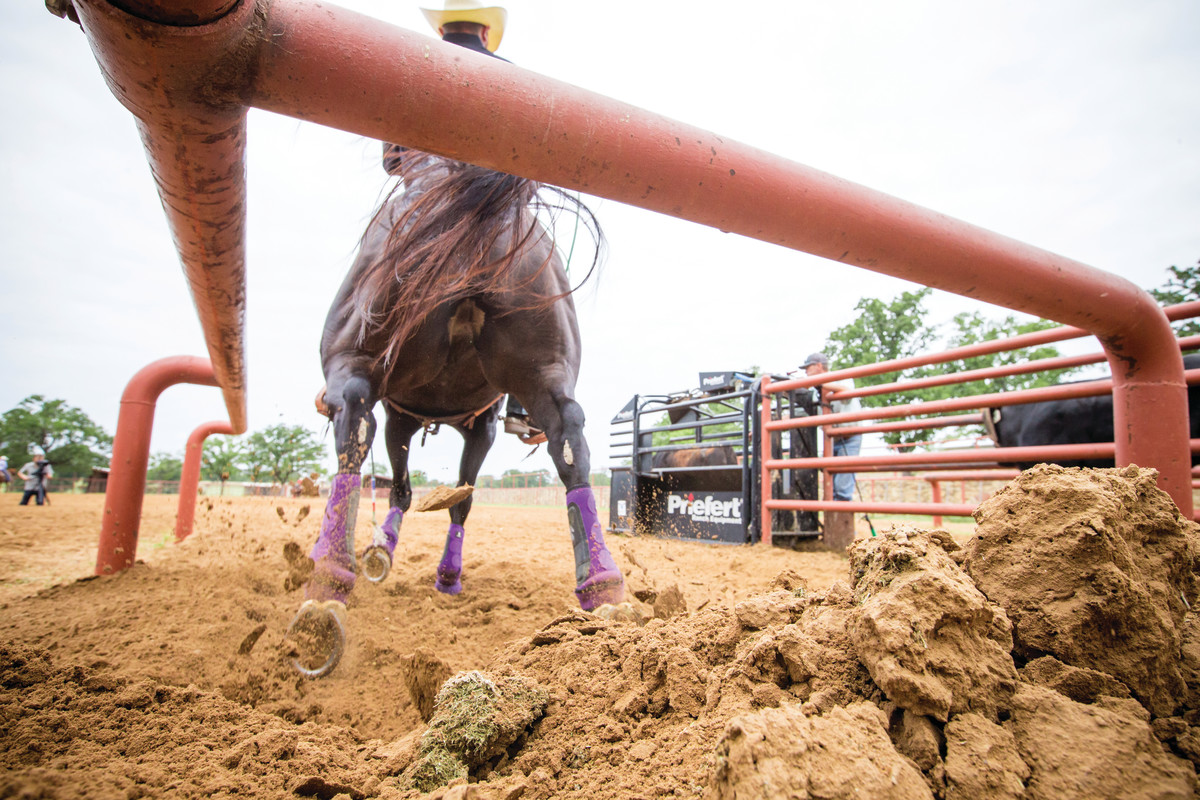
Injury Prevention
Dr. Springstead’s practice is primarily comprised of team roping and barrel racing horses and he said many of the injuries he sees could have been prevented if the horse had been properly conditioned before asking him to perform.
“My main concern with a team roping horse is their back. Heading and heeling horses have to have strong, fit backs to do their job. If their backs are strong and fit, everything below it seems to fall into place. The hindquarters, shoulders, and legs can all assume their full capability if the horse has a strong back,” Dr. Springstead said.
Horses who are fat might appear to have a lot of substance on either side of their spine, but if you feel it and it feels like soft, fatty tissue, that is not a truly strong back, Dr. Springstead said. A strong back will still look full across the topline, but will be full with muscle, not fat.
“I inject a lot of backs due to soft tissue soreness along the spine, and that is not cheap. And it is not an instant fix either. Most ropings you go to will not pay enough to cover the cost of a vet bill you might incur from an injury your horse sustains from not being in adequate shape before you roped on them,” Dr. Springstead said.
Once a horse has experienced pain, they might start compensating to try and protect themselves, which can also greater their risk of leg injury, Dr. Springstead said. One such injury that might result is damage to the dreaded suspensory ligament. Although this injury can happen to any horse, both Drs. Vogt and Springstead said suspensory ligament damage is more likely to happen in horses that are not physically fit and is one of the slowest healing injuries in the horse.
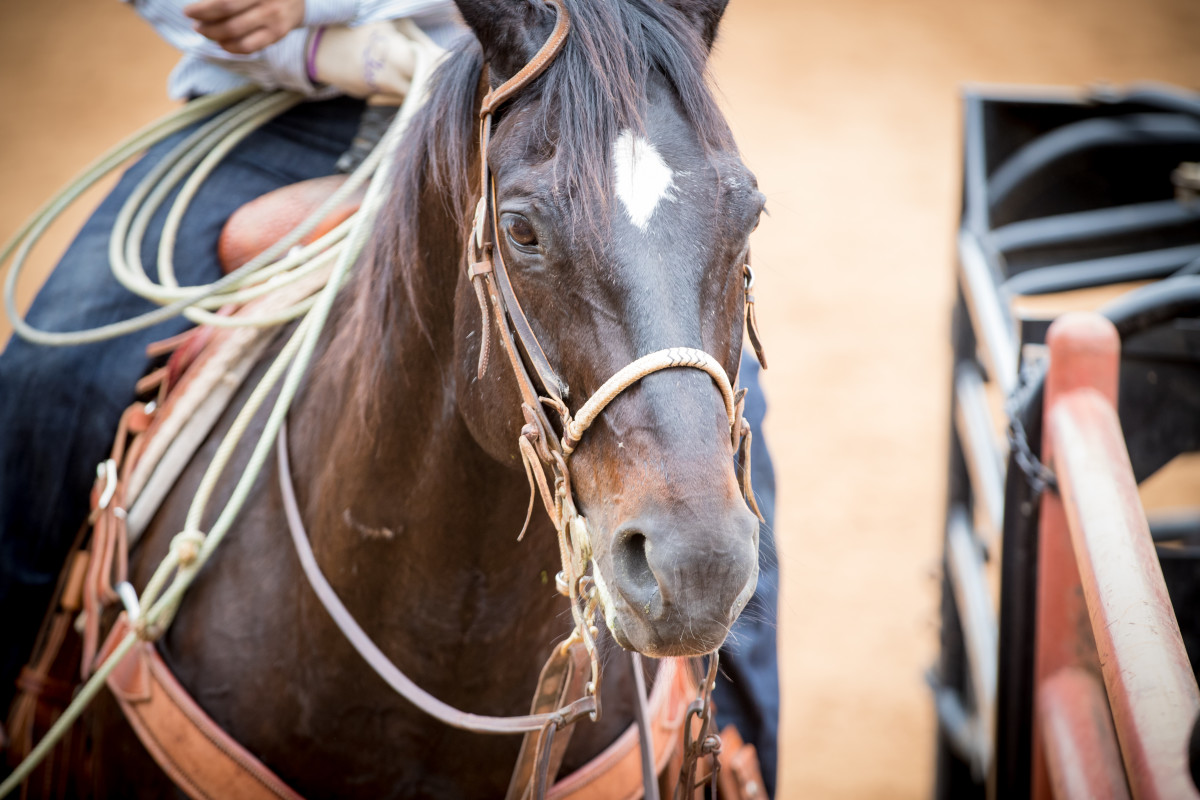
What to Watch For
The definition of “fit” is a bit ambiguous, so Dr. Vogt suggested following your horse’s lead.
“The best way to really get a handle on your horse’s ability to perform their workload is to assess them during and the day after you rope on them,” he said.
Dr. Vogt said the signs a horse has been overworked during a workout are:
- Excessive sweating/frothing
- Flared nostrils/labored breathing
- Mental anguish – box issues, ducking out, anxiousness, etc.
The day after the horse is worked, Dr. Vogt said ropers should spend just a minute or two running their hands over their horse’s body to check for heat, swelling and/or soreness. If any of these signs are detected during or after exercise, Dr. Vogt said the horse has been overworked.
“Even if the horse is fit, you can still push him beyond his limits. Getting a horse fit doesn’t make him invincible. The horse is a very forgiving animal and they will often do what we ask even if it pains them. It is our responsibility to not ask them to do more than we have prepared them to do. We have to be fair to the horse,” Dr. Vogt said.
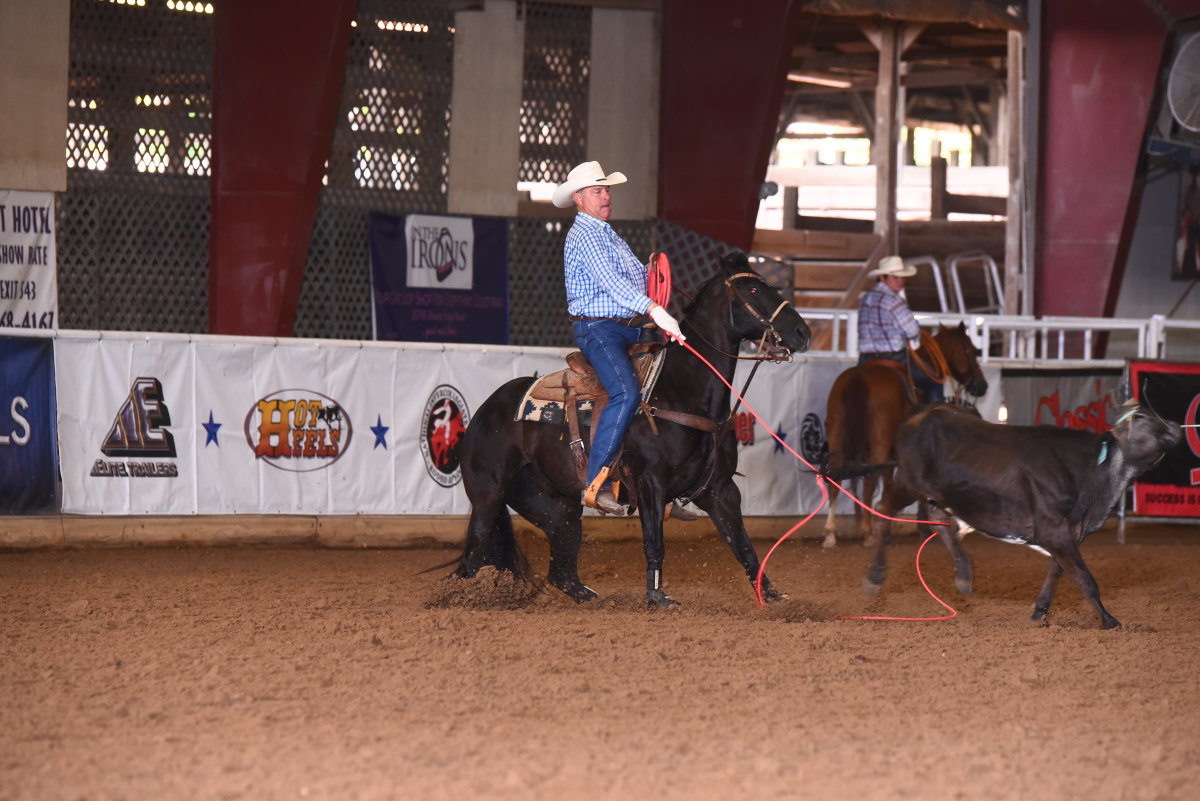
Know When to Say No
Ropers don’t need to train their horses for months on end before they are able to be roped on, Dr. Vogt said. He suggested spending two to four weeks just legging them up a few days a week before roping. Being veterinarians for a profession and only ropers for a hobby, Drs. Vogt and Springstead both know first-hand how difficult it can be to get in the saddle often enough to keep a horse in shape. And, unfortunately, sometimes that requires staying home from the roping.
“I try to ride my two heel horses at least twice a week and will saddle and tie them to the fence when I don’t have time to ride to keep their backs accustomed to carrying that weight, but that said, there are some weeks when I just can’t get to my own horses. And when I know my horses are not prepared, I have to turn down going to ropings. It is just not worth it,” Dr. Springstead said.
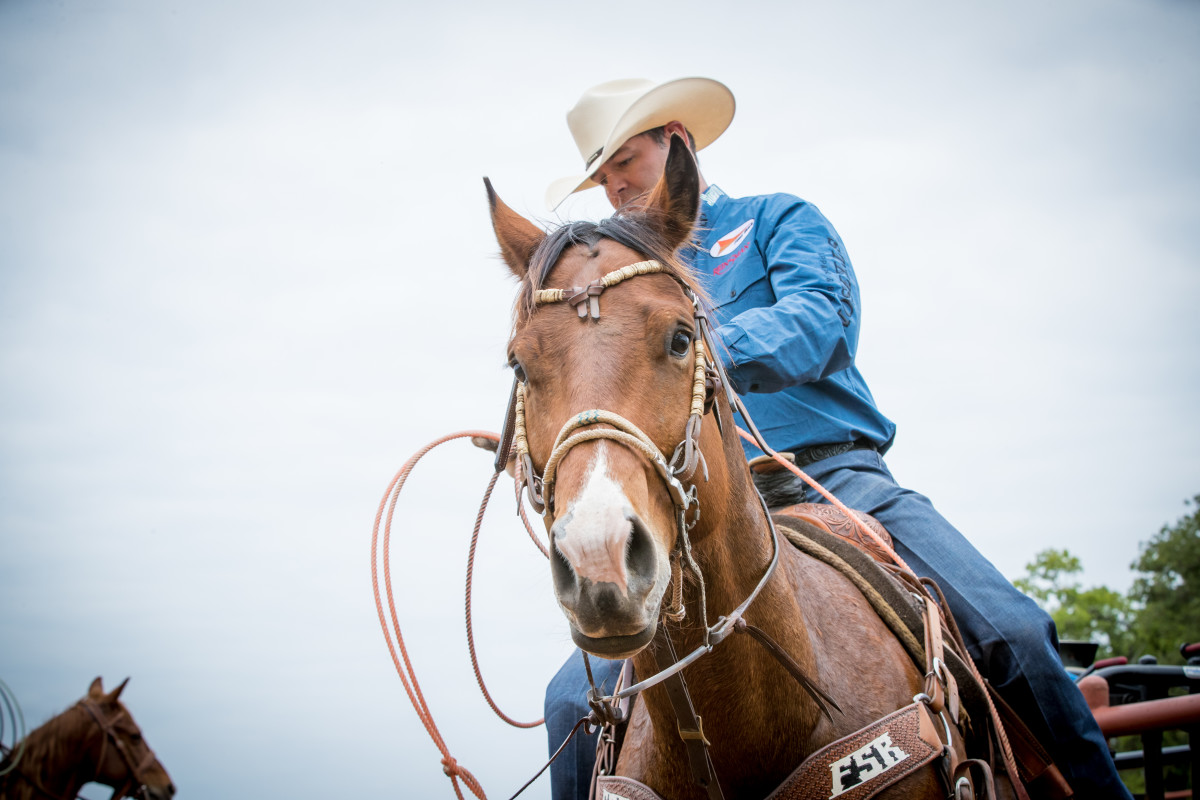
Only One Piece of the Puzzle
Drs. Vogt and Springstead, as well as Harrison and Magnus, all mentioned exercise is only one piece of the fitness puzzle. Maintaining annual or bi-annual assessments from your veterinarian, a regular schedule with a good farrier and keeping the horse on a nutrition program that fits his activity level and age are also important components in giving your horse the athletic advantage he needs to do his job.
Brought to you by










